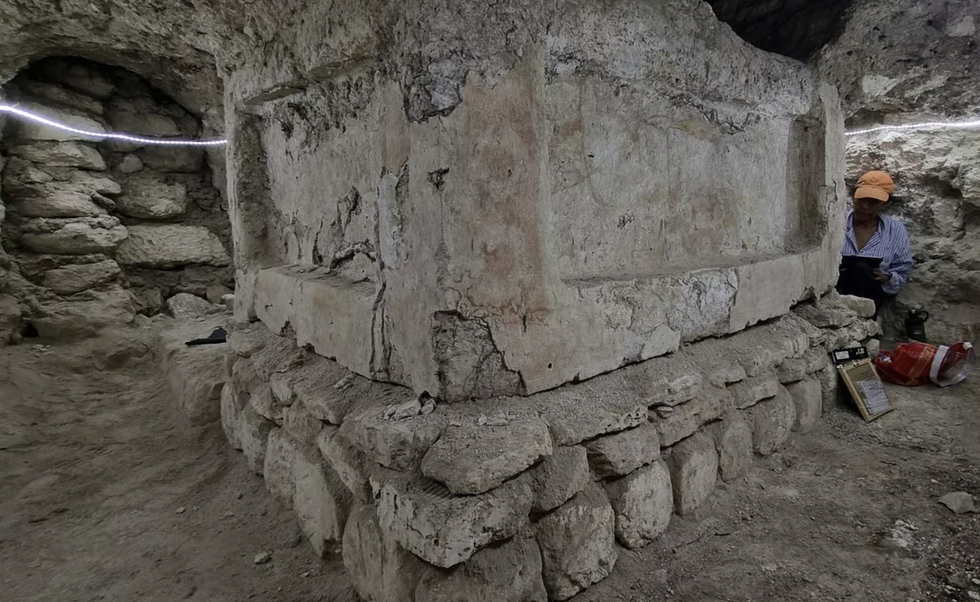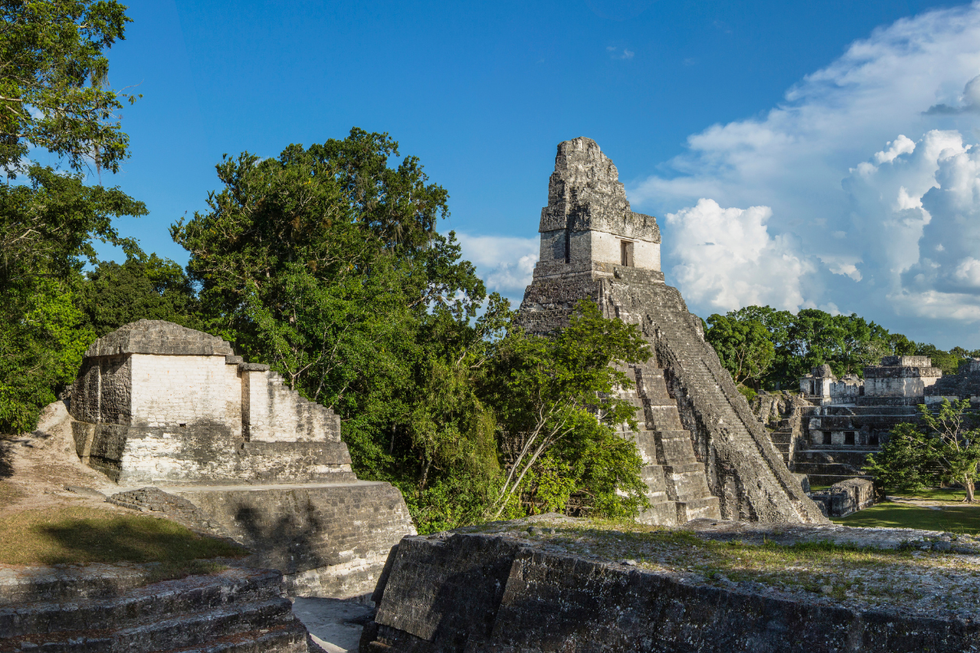Experts took a year and a half to uncover and analyse the altar before making the announcement
Don't Miss
Most Read
Trending on GB News
Archaeologists have unearthed an ancient altar believed to have been used for child sacrifices in Guatemala's Tikal National Park.
The Teotihuacan altar was discovered within the ancient city of Tikal, considered the centre of Mayan civilisation, along with the remains of three children.
Guatemala's Culture and Sports Ministry announced the remarkable finding yesterday - as archaeologists were left stunned and hope it will shed new light on interactions between ancient cultures.
It took experts a year and a half to uncover and analyse the altar before making the announcement, with the site being described as part of an abandoned "city of the gods".

The Teotihuacan altar was discovered within the ancient city of Tikal
Guatemalan Ministry of Culture
Archaeologist Lorena Paiz, who led the discovery, said the altar was believed to have been used for sacrifices, "especially of children".
"The remains of three children not older than four years were found on three sides of the altar," Paiz revealed.
The altar was found within a Teotihuacan residential complex which typically feature houses with rooms and central altars, according to Paiz.
The dwelling where the altar was discovered contained an altar with a figure representing the Storm Goddess.
LATEST ARCHAEOLOGICAL DISCOVERIES:
The discovery provides rare physical evidence of ritual practices involving children in ancient Mesoamerican cultures.
Archaeologists found anthropomorphic figures with tassels in red tones within the dwelling, a distinctive detail from the Teotihuacan culture.
Edwin Román, who leads the South Tikal Archaeological Project, explained that the discovery demonstrates the sociopolitical and cultural interaction between the Maya of Tikal and the elite of Teotihuacan occurring between 300 and 500 CE, according to Román.
Archaeologist María Belén Méndez, who was not involved with the project, said the discovery confirmed "that there has been an interconnection between both cultures and what their relationships with their gods and celestial bodies was like".
"We see how the issue of sacrifice exists in both cultures. It was a practice; it's not that they were violent, it was their way of connecting with the celestial bodies," she explained.

Near modern-day Mexico City, Tikal was the ceremonial centre of the ancient Maya civilisation (Stock)
GETTY
Near modern-day Mexico City, Tikal was the ceremonial centre of the ancient Maya civilisation, beginning as a small village before developing into an important ceremonial centre.
It eventually grew into an enormous city-state, engaging in centuries of battles with the Kaanul dynasty for dominance of the Maya world.
Known as 'the city of the gods' or 'the place where men become gods', it is famous for its twin Temples of the Sun and Moon.
At its peak between 100 BC and AD 750, Teotihuacan was one of the world's largest cities, home to more than 100,000 people despite covering just eight square miles.
The city was mysteriously abandoned before the Aztecs rose to power in the 14th century.








